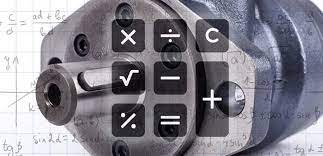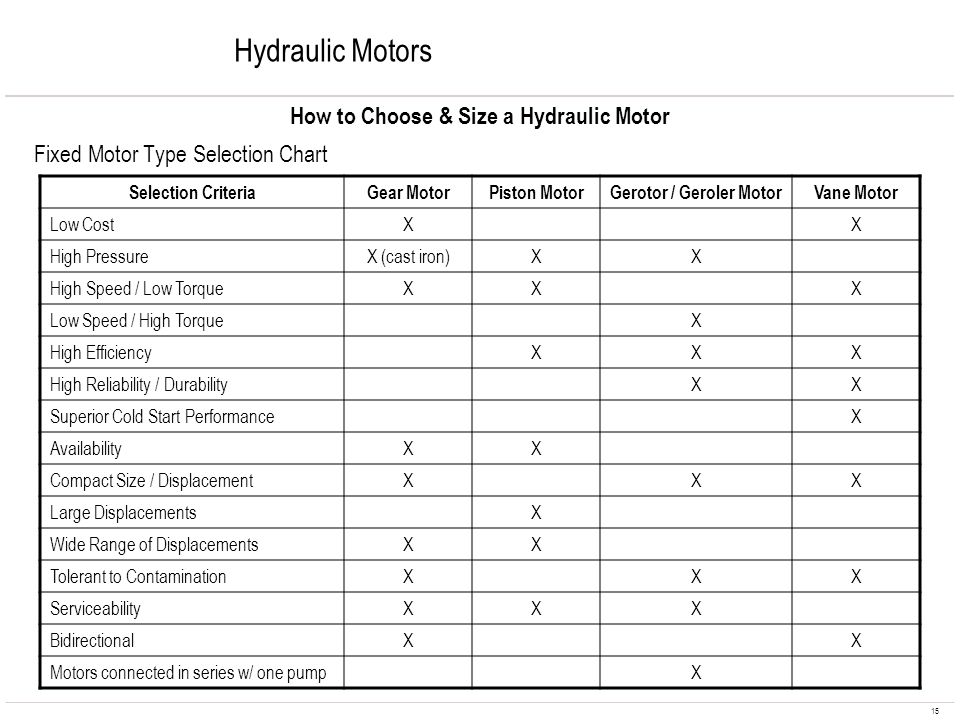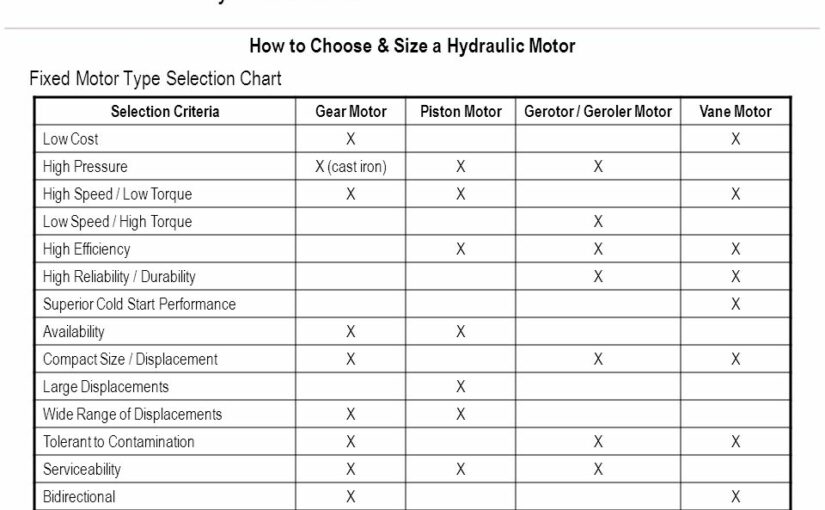When you need to size a hydraulic motor or pump, it is important to know the dimensions of the object you are trying to fit. In this article, we will go over the steps involved in sizing a hydraulic motor and pump.
What is a hydraulic motor?
A hydraulic motor is a type of electric motor that uses hydraulic pressure to power the movement of an object. Pr…
What is a hydraulic motor?
A hydraulic motor is a type of electric motor that uses hydraulic pressure to power the movement of an object. Pressure from the hydraulic fluid provides the motive power for the motor.
How do you size a hydraulic motor and pump?
When sizing a hydraulic motor and pump, you first need to determine the horsepower required by the application. This can be done by multiplying the maximum speed requirement by 1,000. Then you need to find the appropriate size motor and pump. In general, larger motors are better for higher-speed applications while smaller motors are better for lower-speed applications.

What is a pump?
Pumping is the process of moving fluid from one point to another by using a mechanical device called a pump. A hydraulic motor and pump are used together to create a hydraulic system.
There are several factors to consider when sizing a pump, including the desired flow rate, working pressure, and horsepower required. When sizing a pump, it is important to use the correct conversion factor. The conversion factor is the ratio of rotational force (in pounds per inch) to linear displacement (in inches). This can be found in tables or charts typically found in engineering textbooks.
The working pressure is the maximum pressure that the pump can handle without failure. The horsepower required is the amount of power that is needed to operate the pump.
When sizing a pump, it is important to consider both the pumping capacity and the discharge capacity. The pumping capacity is the maximum amount of fluid that can be pumped per minute. The discharge capacity is the maximum amount of fluid that can be discharged per minute.
How do hydraulic motors and pumps work?
Hydraulic motors and pumps are used in a variety of applications, from industrial machinery to automobiles. The workings of these devices are based on the principles of hydraulics, which are the science of fluid flow.
To understand how hydraulic motors and pumps work, it is important to first understand how hydraulics works. Hydraulics is the science of using fluids to move objects or substances. Fluid flows when pressure is applied to it and can be handled by a pump or motor.
A motor uses a rotating shaft to produce rotational motion. This motion is then used to create an internal force that powers a pump. A pump moves fluids by extracting energy from the flowing fluid and transferring it to the moving object or engine.
Hydraulic motors and pumps come in different sizes, depending on the application. Industrial machines typically use larger motors and pumps that can handle greater amounts of force. Automobiles use smaller motors and pumps that are more efficient and able to move larger objects.
The function of a hydraulic motor and pump
A hydraulic motor is a device that converts energy into motion. A pump is also a machine that uses hydraulic pressure to move fluid or gas.
The size of a hydraulic motor and pump depends on the application. For example, a small pump may be used to raise water while a large pump may be used to drive a mining machine. The size of the motor and pump also affects the price.
Here are some common questions about sizing a hydraulic motor and pump:
1) How big should my hydraulic motor be?
This depends on the application and the type of hydraulic system being used. Generally, larger motors are used for applications that require higher torque (such as lifting or moving heavy objects). Smaller motors are often used for applications that require lower torque (such as pumping water). It is important to consult with an expert to determine the correct size for your specific application.
2) How big should my pump be?
This also depends on the application and the type of hydraulic system being used. Generally, larger pumps are used for applications that require higher pressure (such as pumping water or moving oil). Smaller pumps are often used for applications that require lower pressure (
Basics of sizing a hydraulic motor and pump
When sizing a hydraulic motor and pump, it is important to understand the principles of pressure, flow rate, and power. Pressure is the force exerted against a surface by a fluid. Flow rate is the amount of fluid passing through a given area in a given time. Power is the rate at which work is done.
When sizing a hydraulic motor and pump, it is important to understand the principles of pressure, flow rate, and power.
Pressure is the force exerted against a surface by a fluid. Flow rate is the amount of fluid passing through a given area in a given time. Power is the rate at which work is done. When sizing a hydraulic motor and pump, it is important to understand these three principles in order to calculate the appropriate horsepower requirement for your application.
For example, if you are sizing a hydraulic motor for use in a mining application, you will need to take into account the weight of the equipment being moved and the pressure applied to it by the water being pumped. In order to calculate how many horsepower (or watts) are required, you would take into account both the pressure (pounds per square inch or PSI) and flow rate (gallons per minute or G
What size hydraulic motor and pump should I buy?
When it comes to sizing a hydraulic motor and pump, you will want to take into account the application, type of fluid being pumped, and horsepower requirement.
For example, if you are using a hydraulic motor to pump water up a hill, you will need one that is powerful enough to move the large amount of water up the hill. Conversely, if you are using a hydraulic motor to perform small tasks like moving a door or drawer, then a smaller motor might be more appropriate.
Similarly, if you are pumping fluid with high viscosity (thicker), then you will need to purchase a larger pump. Conversely, if your fluid has low viscosity (thinner), then a smaller pump may be more appropriate.
When sizing your motor and pump, always remember to consult with your equipment manufacturer or vendor for specific recommendations.

What are some common uses for a hydraulic motor and pump?
Hydraulic motors and pumps are common in a variety of industrial applications, including agriculture, construction, mining, and logging. Here are some common uses for hydraulic motors and pumps:
-In agriculture, a hydraulic motor can be used to power irrigation systems.
-A hydraulic pump can be used to move water or other fluid substances.
-A hydraulic motor can be used to power a mining machine.
-A hydraulic motor can be used to power a construction machine.
What is hydraulic pump sizing and what are the factors that affect it?
When sizing a hydraulic motor and pump, there are a few important factors to consider. The first is the horsepower required by the machine. Then, the size of the pump must be matched to the horsepower requirement. Finally, the size of the motor must be proportional to the pump size. To get an accurate calculation, it is important to have an understanding of hydraulic principles and how they work.
Conclusion
If you’re looking to buy or rent a hydraulic motor and pump, there are a few things you need to take into account. First, the size of the motor will determine the power it can produce. Secondly, the size of the pump will determine how much pressure it can generate. Finally, factors like speed and fluid flow also play a role in choosing the right machine for your needs. In this article, we’ll go over some common sizing questions and provide some tips on how to choose the perfect machine for your project.
How do you size a hydraulic motor and pump,please click topkitparts see more

